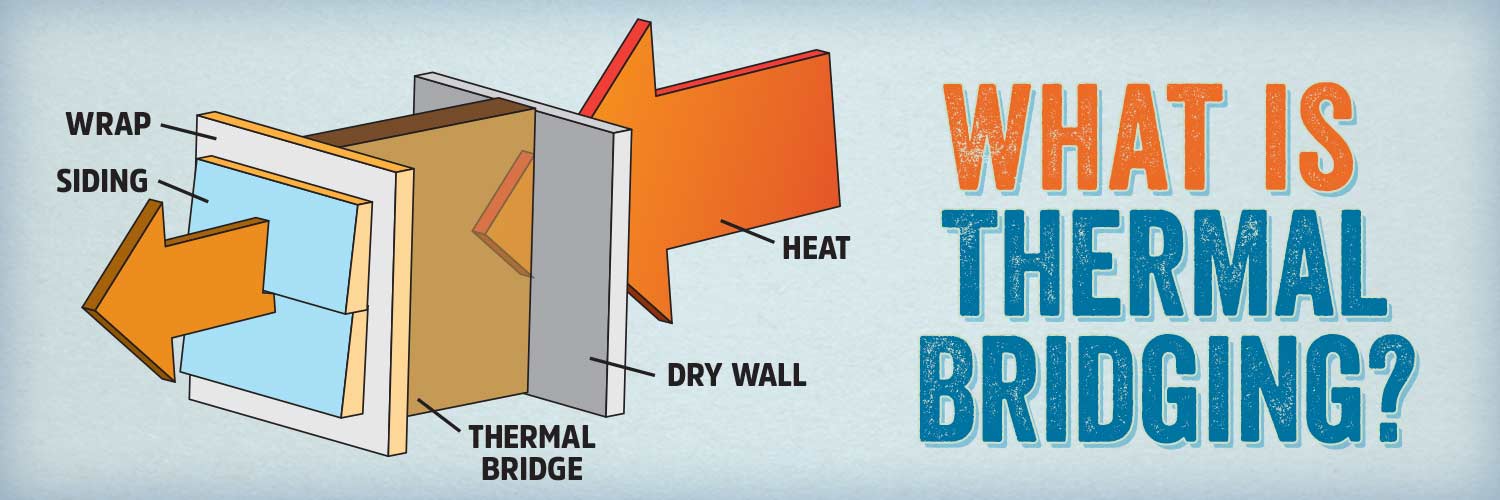What is Thermal Bridging? (Definition/Importance)


Did you know that thermal bridging is a major source of energy loss in your home?
That loss is causing you to have high monthly energy bills and an uncomfortable home. So, what is a thermal bridge and why is it ruining your life?
That might be a bit drastic, but it is definitely costing you money.
RetroFoam of Michigan has been insulating homes with foam insulation since 2002. In that time, we have seen the issues thermal bridging can cause.
First things first, we will explain what thermal bridging is and how it relates to your insulation.
What is a Thermal Bridge in Building Insulation?
When explaining what a thermal bridge is the best and quick answer is – science.
At least that’s what one of our estimators, John Kushon, told me when I asked.
Let’s break down that science so you understand thermal bridging.
A thermal bridge occurs when there is a break in the building envelope, like in the insulation. Basically, if there is a weak link in your roof, floor, or walls that interrupt the insulation, then there is a space that air can move into and out of your home.
A thermal bridge doesn’t just mean your home is losing heat, it can also cause the warm air in your home to cool down when it comes in contact with the cold surface. That contact will lead to the formation of condensation which in turn can become mold.
When this happens, you will see the tell-tale blackish-colored specks start to show through the drywall of your ceiling. This is particularly common for cathedral ceilings.
Other signs you have thermal bridging in your home come during the winter.
If you can see stripes on your roof where the snow has melted and stripes where it hasn’t, you have thermal bridging in your attic. This is because the insulation in your attic isn’t connected the way it should, allowing for air movement around it.
If you suffer from ice dams every winter, this is another sure sign that you don’t have the insulation coverage you need. Thermal bridging will cause the snow to melt, then collect and form an ice dam at the edge of the roof.
A source of thermal bridging you may not even think about is the wood studs of your home. Wood isn’t a great insulator, so even if you have traditional insulation, like fiberglass, in your walls, there is still energy loss through the wood between the studs.
Now that you know what a thermal bridge is, you need to know how to fix it if you can.
How to Fix a Thermal Bridge
While there are some cases where you can’t fix thermal bridging, adding continuous insulation is the best way to combat it.
The thing is, thermal bridging is an inherent design flaw with cathedral ceilings. The best way to fight thermal bridging in a cathedral ceiling is to put continuous insulation on either side of the trusses that make up the ceiling. Unfortunately, this is often not done when the structure is built, making it a very invasive process in a retrofit.
Ultimately, most homeowners choose to forego that invasive process and just insulate the stud cavities.
You can add insulation to your home in areas like the attic, cathedral ceiling, and walls. You can also break the thermal bridge in your walls is to add new siding that has a contoured foam backing attached to the panel.
Creating an air seal in your home is also a good way to mitigate that energy loss. Traditional insulation won’t give you an air seal, so using a material like foam insulation throughout your home will reduce air and energy leakage.
If you’d like to learn more about foam insulation and its benefits, check out the Learning Center on our website.
About Amanda Ringler
Amanda previously has worked as a breaking news and crime reporter, TV news producer, and editor in Flint and Detroit. Throughout her career as a journalist, she has won several awards from The Society of Professional Journalists - Detroit Chapter and the Michigan Press Association. As part of the RetroFoam of Michigan family, Amanda uses her experience as a journalist to write content that will help educate homeowners on the benefits of foam insulation. When Amanda isn’t writing, she’s spending time with her husband and rescued huskies. She also loves knitting, making art, cooking, and hosting dinner and a movie night for friends and family.

.jpg)
